The river known to the Chinook Indians as Hyas Cooley Chuck collides with the Pacific Ocean to create the worst wave conditions on the planet. While Native people regularly crossed the Bar in their large ocean-going canoes, the rough water stopped many of the early European explorers who were looking for the mythical River of the West. In May 1792, the American fur trader Captain Robert Gray waited out nine days of adverse conditions on the Bar before finally crossing into the river. He named the river for his ship, the Columbia Rediviva.
The Chinook Chief Comcomly entered into European histories in 1795 when the British ship Ruby under Captain Charles Bishop sailed into the Columbia. The ship traded for furs for eleven days. When the Chinook ran out of furs, the British traded for clamons, a kind of body armor made by the Chinook. These were in high demand by the Indian nations farther up the Pacific coast. Captain Bishop invited Chief Comcomly to spend the night aboard the ship and provided him with a fine coat and trousers. Comcomly then led a Chinook expedition 300 miles upriver to obtain more clamons. Some of these were obtained by less than peaceful trading.
Over the next two decades, Comcomly solidified his leadership among the Chinook bands using a combination of trading skills, diplomacy, and marriage. Some writers report that he had a wife from nearly every tribe in the confederation as well as some outside of the confederacy. With regard to his physical appearance, Comcomly is generally described as being short and blind in one eye.
Chief Comcomly also had several daughters. His daughter Ilchee (Moon Girl) was born along the Columbia River about 1800. She was said to be Chief Comcomly’s favorite daughter.
In 1813, Pacific Fur Company Chief Factor Duncan McDougall, from Fort Astoria, married Ilchee. In an article in Oregon Historical Quarterly, Mathias Bergmann reports:
“Having a Euro-American at Fort Astoria as an in-law not only increased Comcomly’s access to goods but also brought prestige, and marriage into one of the most powerful families in the region extended to the Euro-Americans much-needed economic and physical security.”
To arrange for the marriage, McDougal had to first get the permission of Chief Comcomly and then come up with the bride-price appropriate for a chief’s daughter. While McDougal and Comcomly were good friends, and the marriage would be advantageous to both, it is reported that Comcomly demanded a high price. The couple were the first people married at Fort Astoria. This marriage only lasted a couple of years as McDougal left the country.
Ilchee was later married to Chief Casino whose band lived in the Vancouver, Washington area. While Comcomly and Casino were related, they were also rivals who sought to control the lucrative European fur trade along the Columbia River.
Ilchee had a reputation as a powerful shaman and as an independent woman leader. Ilchee was not Casino’s only wife and when one of Casino’s boys by another wife died, she was blamed for the death. When Casino began to suggest that she should be killed for causing the death of his son, she left and sought the protection of the Hudson’s Bay Company chief factor at Fort Vancouver. She stayed at Fort Vancouver for a while, and then returned to the mouth of the Columbia River where her family lived.
Notice in the sculpture above, that she had gone through cranial deformation as an infant resulting in the high sloping forehead. Cranial deformation was used to indicate free and/or high social status. This was a common practice among many tribes and served as a way of distinguishing nobility from commoners.
Cranial deformation was also seen as a way of enhancing physical attractiveness. In their book Coast Salish: Their Art and Culture, Reg Ashwell and Roger Hancock report:
“A flattened forehead, with the head sloping upward toward the crown, was considered a mark of beauty.”
Cranial deformation was accomplished by binding an infant’s head in a particular way so that as the bones of the head grew they would take on the desired shape. Reg Ashwell and Roger Hancock describe the process:
“A pad, usually of cedar bark, was attached to the baby’s cradle and bound against the forehead. By slow pressure, over a period of time, the forehead was gradually flattened to the shape preferred.”
The jewelry which she wears—earpieces and nose ring—also show that she is nobility. The earpieces were most likely made of copper.
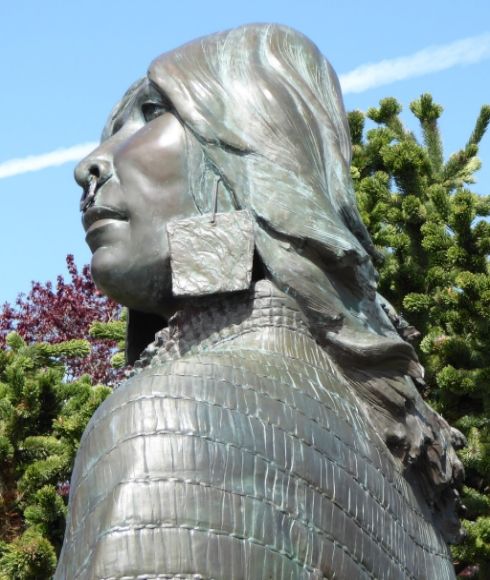
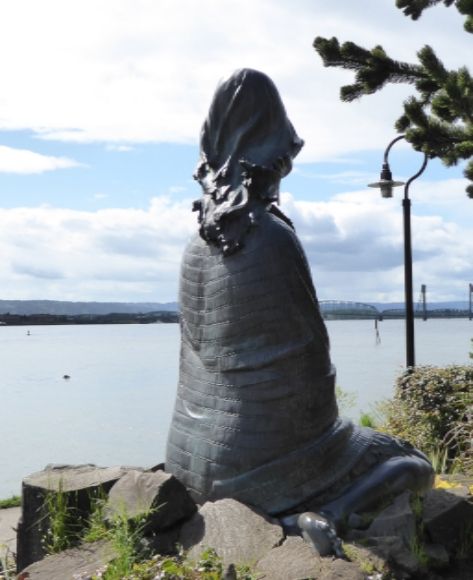
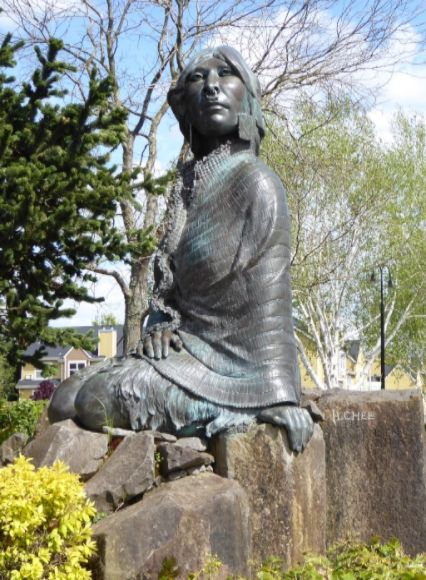
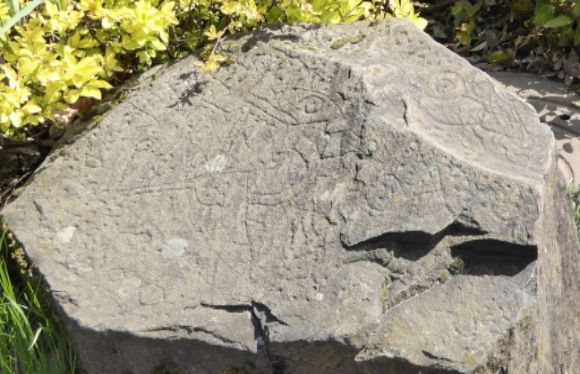 At the base of the sculpture is a replica of the petroglyphs (rock carvings) which are found along the Columbia River.
At the base of the sculpture is a replica of the petroglyphs (rock carvings) which are found along the Columbia River. 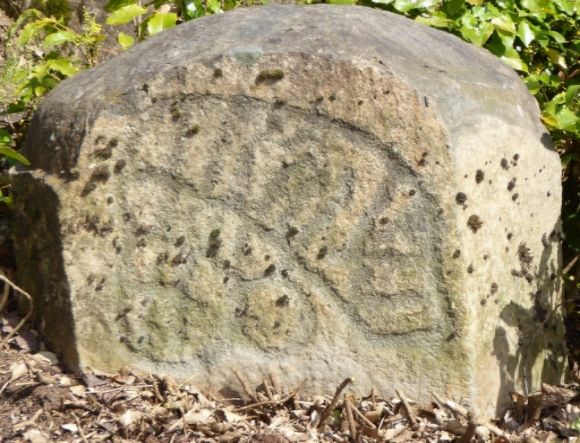 Shown above is another petroglyph.
Shown above is another petroglyph.
The Ilchee sculpture was done in 1994 by Eric Jensen. It is located along the Waterfront Renaissance Trail along the Columbia River in Vancouver, Washington.
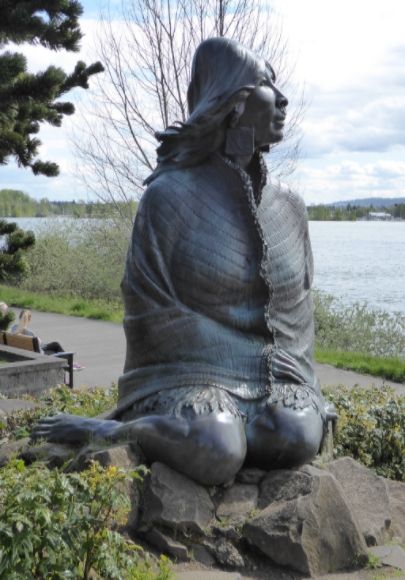
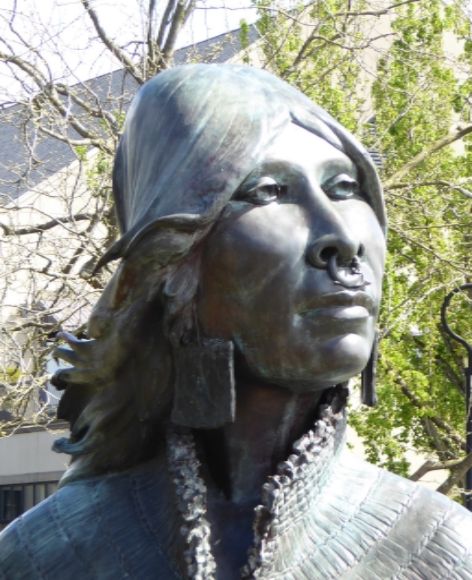
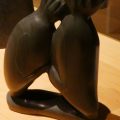
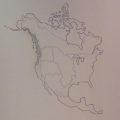


Leave a Reply